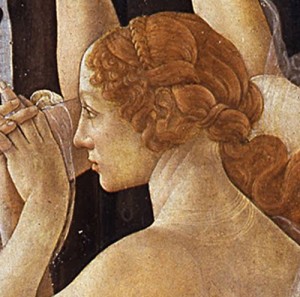Visual Arts
To quote the great philosopher Aristotle, “Thought is impossible without an image.” We experience the world predominantly through our eyes, and that makes our eyes a valuable target for content enriched messages. The visual arts allow us to deliver our message in one dynamic punch!
A Gestalt
It all happens in an instant! Visualization reinforces the written word, delivering a massive message all in a glance! The gestalt principle maintains that the human eye sees objects in their entirety before perceiving their individual parts, suggesting and reinforcing a conclusion that the whole is greater than the sum of its parts.
The brain is holistic, parallel, and analog, with self-organizing tendencies. The gestalt effect is the form-generating capability of our senses, particularly with respect to the visual recognition of figures and whole forms instead of just a collection of simple lines and curves.
Visual communication campaigns, carefully conceived and executed, can stimulate business success. The tools of the trade encompass printing, publishing, packaging, digital imaging, computer graphics, Internet publishing, web site development, digital photography, and printable electronics. Images convey memorable thoughts, evoke strong emotions, issue clear instructions and deliver pertinent messages. All of these things make the Visual Arts a powerful marketing strategy!
Effective Visual Communication
As with all forms of communication, the first step is to determine what you want to say. To communicate your message effectively, you must know what your message is. Once you know what you want to say, effective visual communication is achieved by displaying information in a way that enables people to clearly see an accurate representation of your message and understand what they see.
It’s important to understand how people see (visual perception) and how people think (cognition). The communication must be presented in a way that takes advantage of the strengths of visual perception while avoiding its weaknesses, and in a way that matches the human thought process.
Visual Perception & Mind
Of the total sense receptors in the human body, 70% reside in our eyes. Visual perception delivers the world to our brains at high speeds and with exquisite subtlety, but it does so in particular ways that are not necessarily intuitive. If we want to present information to people’s eyes, we must take advantage of how the eyes work, including some very real limitations.
The visual system is a pattern seeker of enormous power and subtlety. The eye and the visual cortex of the brain form a massive parallel processor that provides the highest-bandwidth channel into human cognitive centers. At higher levels of processing, perception and cognition are closely interrelated, which is the reason why the words ‘understanding’ and ‘seeing’ are synonymous.
Go For The Gestalt
Short-term memory is limited to about four chunks of information at a time. So it’s very important to create visual communications which transmit a single visual pattern that can be stored as a chunk of memory and perceived within eye span. Communication is most effective when you say neither more nor less than what is relevant to your message. Don’t make people wade through meaningless visual content to find what really matters. A picture is really worth a thousand words!


